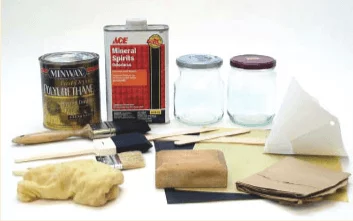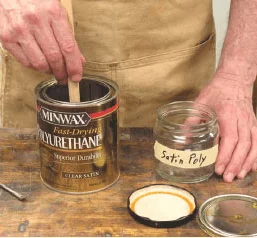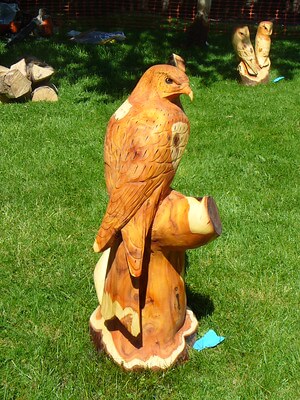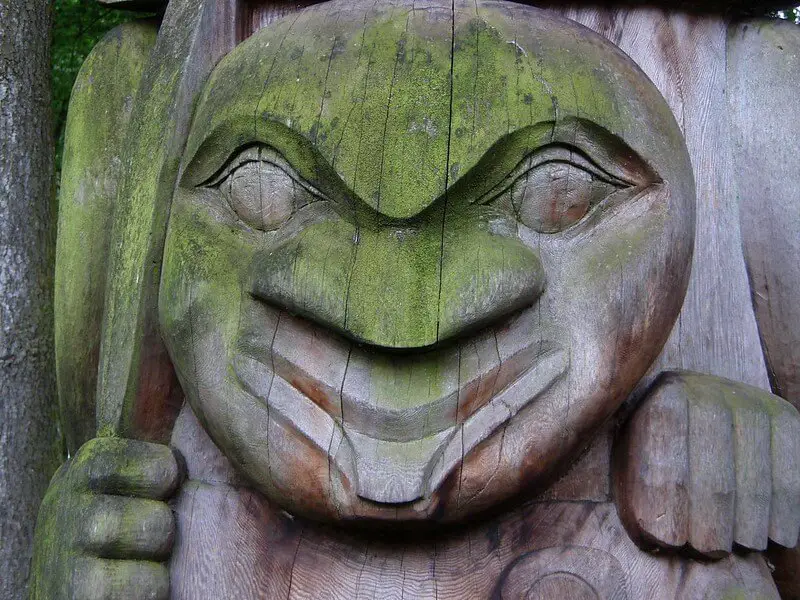Wood our main carving material is quite unstable. Wood is a breathable medium and will readily lose and absorb moisture from the air. If this happens there’s tension from the internal structure of the wood that causes the wood to split as it dries and shrinks.
So how can this be prevented, you ask? In this article, we take a look at how to keep wood carvings from splitting, and possibly extending their lifetime. Use the table of content below to quickly jump to sections.
Related: Will linseed oil stop wood from cracking?
How to keep wood carvings from splitting – Finishing wood
Wood internal structures vary between sapwood and heartwood. Heartwood is the best wood to use and it loses moisture at a slower pace than sapwood. Heartwood is also more compact and tough than sapwood.

As the wood dries it will create opposing tension between the sapwood and heartwood. if The moisture is lost too quickly the sapwood cells collapse and shrink causing splits in your carving.
so how can you keep wood carving from splitting?
You can prevent a wood carving from splitting by using a sealer. Sealer is generally the first coat of any liquid finish. A sealer penetrates the wood, cures, and stops up the wood pores. The second coat won’t penetrate through the cured first coat. However, the second coat helps protect the first and also gives a smooth surface.
There are many options for sealers. Perhaps the best sealer that will stop wood cracks, checks, and splits is Polyurethane finish!
Polyurethane: Will poly keep wood from cracking?

Polyurethane is quite a popular finish and it’s for good reasons. Polyurethane is the most effective oil finish available in the market.
Poly protects wood from moisture, heat, solvent, and scratch resistance. On top of this polyurethane just as with all varnishes is the easiest finish to apply with a brush.
But can polyurethane keep wood from cracking?
Yes! polyurethane is a film-building finish. Therefore, it forms a coat that seals the wood. This seal prevents the wood from losing and regaining moisture from the air; a process that results in wood splitting.
Once the wood cannot ‘breathe’ There is no internal pressure or tension to cause splits or checks.
The great thing about using poly on your wood as a final coat to prevent wood splitting is it can be incorporated with other finishes without causing havoc. Poly can be applied to stained or painted surfaces. Polyurethane can also be painted on top as long as it is dry.
Read Next
- How to Keep Wood from Splitting
- Protect Carving from Splitting
- Carving Green Wood vs Dry Wood
- Seasoning Wood for Carving
- How to Prepare Wood for Carving
- Best Woods for Carving Using a Dremel
Poly for Chainsaw carvings and tree stumps

Poly is simply the best. It offers good protection for outdoor wood. Chainsaw carvings and other tree stump carvings are usually displayed outdoors all year through. As such, they need protection from harsh weather and UV rays.
A combination of paint and polyurethane can combat all the hardships of outdoor woodcarving like chainsaw carvings. Today technology allows the production of poly that offers UV protection. If you are looking for a step-by-step guide on protecting your chainsaw carving check out How to keep chainsaw carvings from cracking
How to preserve wood carvings – Alternative methods
Using Paint
Paint is often overlooked as a finish. Many people will look at paint as only decorative but paint is actually one of the best protection against UV ray blocking.

Some paints have special elements that make them water-resistant and therefore can offer protection from moisture.
Paints are however not so good at offering the latter but adding an extra coat of poly locks in the paint offers better moisture damage protection.
Applying Oil Finish
Oil Finish is an easy way to keep your wooden carvings from splitting. Oil polishes can be messy, but they also make your carvings look great by bringing out the natural grain of your wood. Be sure to rub down carvings with a soft cloth after applying polish.

If you want to go a step further, use furniture wax, which will seal in the polish and make future clean-ups easier. You should reapply every few months or so depending on how often you use your carving. An alternative option is using conditioner spray, which you can easily find at any local hardware store.
Oil finishes are not as durable as poly therefore they have a maintenance schedule. To protect your wood carvings from splitting, apply a clear coat to them every year. A simple yearly application of quality wood stain or clear coat will increase the life of your piece.
The clear coat helps to protect the carving from damage caused by humidity and other factors. Moreover, a clear coat of polyurethane gives extra protection against moisture.
It’s also essential to store your wood carving properly. Once you’ve finished carving your wood carving, make sure you keep it in a location where it will dry. The best place to put it is somewhere out of the way where it won’t be damaged by the elements.
Applying a coat of lacquer
Applying a coat of lacquer is an easy way to protect your wood carvings from splitting. This thin, protective coating is both inexpensive and readily available in a spray can, so it’s hard to pass up. Just remember that before you start applying coats, you want to make sure that your surface is clean and free from dust.
Since lacquer dries quite fast application with a brush is near impossible. Since there’s no crosslinking in cured lacquer, even top-quality lacquer is not very resistant to solvent, heat, or chemical damage.
Lacquer is, therefore, suitable for small whittled projects that are to be displayed indoors.
Understanding wood for carving
Understanding wood for carving is vital not only in knowing its capabilities and limitations when carving but even when finishing the wood. In addition, there is a variance between hardwoods and softwoods.
Hardwoods are generally more durable and offer some sort of resistance on their own. However, they still need extra protection. Hardwoods will take oil finishing better than softwoods.
Beware while using softwoods like pine for your carving as staining will produce a blotching effect if not done correctly.
other than softwood and hardwoods it’s important to always select quality lumber for carving. As a rule of thumb always go for heartwood and where possible avoid sapwood completely.
Choose a Good Size For Your Projects
Choosing the right size to carve is also a good way to avoid splits. Normally the bigger the wood the higher the internal difference in structure. This is to say bigger sculptures are more prone to developing checks and splits along the grains due to internal pressure as it dries.
Another helpful tip is to avoid very broad boards. Wood movement is usually along its width. The broader a piece of wood is the more like to warp or form splits.
If you have no choice but to carve big or use such broad lumber as mentioned above all you have to do is finish it with a good finish like polyethylene or any other methods discussed above.
Keep your woodcarving moisture-free
When working with wood, moisture is a huge issue. If it isn’t removed properly, your carving will split or crack. Keep a sponge handy and gently wipe away any water that accumulates on your carving before it has time to penetrate into the wood itself.
Make sure to keep a bowl of water nearby so you can dip your hands in and wash them before you handle your work again.
Also, if possible, make use of humidity-controlled rooms (or even just put down a towel) where you do your carving; both drying agents like air conditioners and humidifiers can affect how fast your wood dries out.
Use the Right Nails
When holding your piece to the bench do not use nails or screws that are too big. Especially common in softwoods like conifers, a big screw or nail will make the wood split.
using the right size is gentle on the wood and does not compromise the design. This is especially true for carving in the round and small pieces that can be viewed from all angles including the bottom.
Lift outdoor carvings with a Solid Base
For outdoor woodcarvings, it’s a good idea to have them on a solid base or stand. If you don’t want to drill holes in your wood sculptures, consider using bolts and screws to connect them to a wooden platform. A Solid base high enough, lifts it above the ground and away from moisture or rainwater runways.
Friendly tip: be careful when transporting your carved pieces – take your time carrying boxes with multiple figures over stairs and rough terrain; they can chip easily if mishandled. Make sure you know where each piece is going before piling anything into a van or packing things up in storage!
Don’t Rush The Process
If you work too quickly, you’ll increase your chances of splitting wood. Make sure you take it slow and don’t press down on your carving knife when making cuts—your hands should provide all of the pressure required to carve. Take a break if your hands begin to get tired because stressed muscles are more likely to cause splinters.
Conclusions best-split protection for woodcarving
Wood is quite an unstable material. Sealing it with a good wood finish like polyurethane helps stabilize the wood and prevent future wood splits.
In our analysis of how to keep woodcarving from splitting, we hope we have offered a solution that can help preserve your woodcarving for a long time.
Check out how to repair cracks in wood carvings
